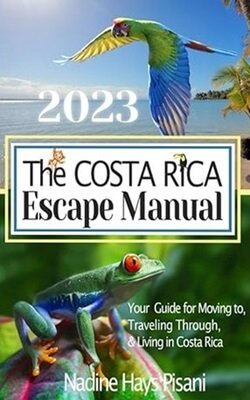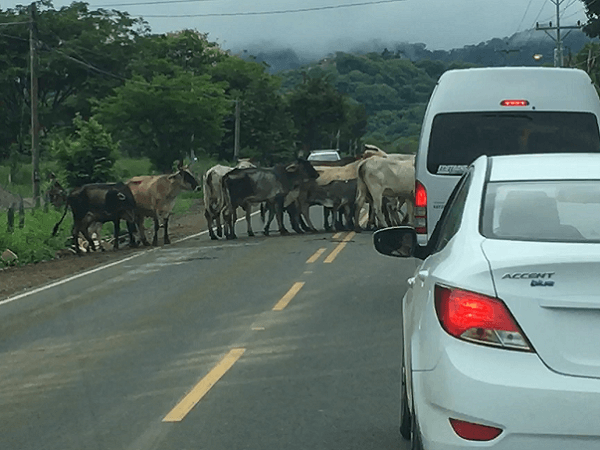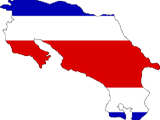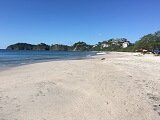Search this site
Interactive Map of Costa Rica
Our map includes destinations for hiking, waterfalls, restaurants, live webcams, day trips and airports. Select an icon for more details about each destination and a link to our detailed review page. In addition, we answer the question, "where is Costa Rica".
Quick Links
Restaurants/Food/Beer
- La Divina Comida
- El Lagarto
- Fish and Cheeses
- Coco Loco
- Sentido Norte
- Gracia Mar Vista
- Lola's
- Soda Marcela
- Soda Estero Azul
- Gracia La Vid Pizza
- Numu Brewing Company
- La Forketta Italian
- Sheriff Rustic
- Rio Lounge La Fortuna
Waterfalls:
Day Trips:
- Guaitil Pottery
- Ostional Turtles
- Samara
- Reina's Chocolate Factory
- Fishing
- Bijagua Ranas Wildlife Sanctuary
- Manuel Antonio National Park
Beaches:
Webcams:Airports:
- Arenal Volcano
- Poas Volcano
- Puerto Jiminez
- Dominical
- Playa Hermosa
- Playa Jaco
- Nosara Moana Surf Resort
- Tamarindo Dira Resort
- Tamarindo Witch's Rock
- Playa Flamingo
- Los Delfines Golf and Country Club
- Liberia/Guanacaste (LIR) Daniel Oduber Quiros International
- San Jose (SJO) Juan Santamaria International
- Tambor (TMU)
- Limon (LIO)
- Tortuguero (TTQ)
- La Fortuna (FON)
- Puerto Jiminez (PJM)
- Tamarindo (TNO)
- Perez Zeledon (IPZ)
- Quepos (XQP)
- Nosara (NOB)
- Drake Bay (DRK)
- Palmar Sur (PMZ)
- Golfito (GLF)
Location of Costa Rica

When planning your next big adventure or considering a new place to call home, Costa Rica should be at the top of your list. Residing in the heart of Central America, this tropical paradise has a location that makes it easily accessible, particularly for tourists or expatriates from the United States.
The geographical location of Costa Rica is bound by the Pacific Ocean to the west and the Caribbean Sea to the east. To give you a clearer picture, it is nestled between Nicaragua to the north and Panama to the south, effectively acting as the scenic bridge sandwiched between the two. At it's closest point, Costa Rica is just a little over 1,100 miles from Miami, Florida and about a two hour flight.
Being close to the equator, the total amount of daylight only varies by a little more than 30 minutes throughout the year. Sunrise varies from about 5:48 am in December to 5:16 am in June. Sunset varies from about 5:21 pm in December to a little bit after 6:00 pm in June.
A
common misconception is the belief that Costa Rica is an island.
However, this isn't the case. It is, in fact, an isthmus, or a strip of
land with sea on either side, that connects Central and South America.
Thanks to its strategic location, getting to Costa Rica from the United
States or any neighboring countries is quite straightforward.
Costa Rica covers an area of approximately 51,100 square
kilometers, or 19,730 square miles, making it slightly smaller than West
Virginia. Despite its compact size, this vibrant country boasts a
stunning array of landscapes, flora, and fauna.
Given its small size, and being squeezed between the Pacific and
Caribbean oceans, this dynamic country is has an extremely diverse
topography. From volcanos,
rain forests, and mountains to idyllic beaches and wetlands, all within
just miles of each other. There is
always a new spot to explore. Moreover, the size of Costa Rica is small
enough to traverse the entire country by car, from coast to coast,
easily within a day.
The topography creates an endless number of micro-climates with crystal clean air and lack of pollution. The visitor can find the best climate suitable for them.
Due to the proximity to the equator, and lack of the Coriolis Effect, which tempers the formation of hurricanes, Costa Rica is not as susceptible to these storms as its neighbors to the north. However, occasionally a tropical storm or hurricane will form near Costa Rica and move west or north, sometimes impacting the region and bringing heavy rainfall, mudslides and flooding.
Costa Rica is one of the most unique regions in the world. A mountain range in the central of the country that runs north to south consists of 6 active volcanoes and 55 inactive ones, the tallest one rising to 11,260 feet. This creates extreme micro-climates from tropical rain forests to desert like areas that receive little, if any rain for six months out of the year.
Costa Rica is part of the "ring of fire" and small undetectable earthquakes are common every day, however larger ones do happen.
It's fascinating
to note that even though Costa Rica makes up only about 0.03% of the
Earth's surface, it contains nearly 6% of the world's biodiversity.
Hence, it is often regarded as a "bio-geographical bridge" flowing with
an extraordinary abundance of life.
Costa Rica is subdivided into seven provinces: San José, Limón, Puntarenas, Heredia, Alajuela, Cartago, and Guanacaste. Each province hosts its own unique culture, sights, and experiences, virtually guaranteeing that anyone visiting will find something that suits their taste.
Although Costa Rica is small
and relatively uncrowded compared to other nations, it has a relatively
significant population of approximately 5 million people. The three
main towns are the capital of San Jose in the central valley, Limon on
the Caribbean side and Liberia to the north. The highest density is in
San Jose and nearby suburbs. This high concentration of people in just a
few cities creates a sparse population over the remainder of the
country. This low density contributes to a sense of tranquility and
untouched
natural beauty in the majority of the country.
In conclusion, the small yet vibrant country of Costa Rica is a treasure in Central America, with its diverse ecosystems, friendly locals, and strategic location close to the United States. It’s not an island, but a breathtaking gateway to an adventure packed with stunning vistas and tropical experiences. Take a trip to this part of the world and explore the enormous potential that this small and uncrowded paradise has to offer.











